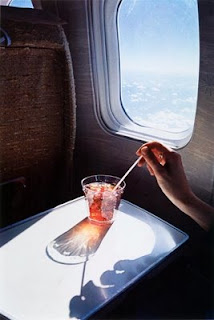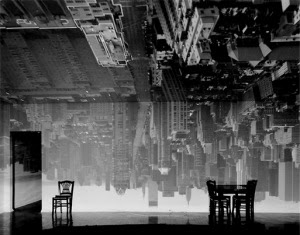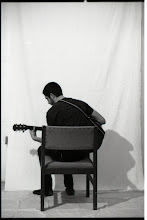The Anthotype print is more or less made from fruit and alcohol. It is one of the most simple alternative processes. All you must do is grind up a bunch of fruit or flower petals and then you add a "splash" of denatured alcohol to the pulp and mix until it appears soupy. you then pour the solution into a double layer of cheesecloth and squeeze all the pulp juice into a container. You then coat your paper with the fluid and let it dry. You expose these for one to three weeks and look for the pigment to fade to appropriate contrast; when the highlights bleed to white. What is unique about this process and important to remember is that because of the sun, a positive negative makes a positive image and a negative negative makes a negative image. Colors vary upon what fruit or flowers you mix.

Stephane Dabrowski-Anthotype 2

Carol Golemboski-Raspberry Ferris Wheel
The Palladium Print
The Palladium print starts with a mixture of ferric oxalate, potassium chlorate and palladium (II) chloride/sodium chloropallidite. these solutions are mixed and applied to a paper and then let to dry in cool-air. During exposure the print is deemed ready when its "whisper image" appears. After exposure the paper is then washed in ammonium citrate or potassium oxalate, which reduces the image to its metallic palladium. The developed print is put in an acid bath known as EDTA and then washed for permanence. The process results in increased depth and detail in an image and is considered a warm tone print.

Jose Miguel Ferreira-Naturalia 06

Jose Miguel Ferreira-Norte 02
The Gum Bichromate Print
The gum print is made from a mix of potassium and bichromate salt which is added to a colloid that can come from gum arabic, glue or gelatin. This liquid is applied to a paper that is dried and then printed on with a contact negative. the print is then developed in water exactly like cyanotypes. A pigment can be added to the original solution to cause the final print to be various colors, but otherwise the gum process turns out as a tan image. The gum process produces a painterly look to images giving the impression of the "artists hand."

Scott McMahon-Set for the Rise

George Omorean-Silhouette















































